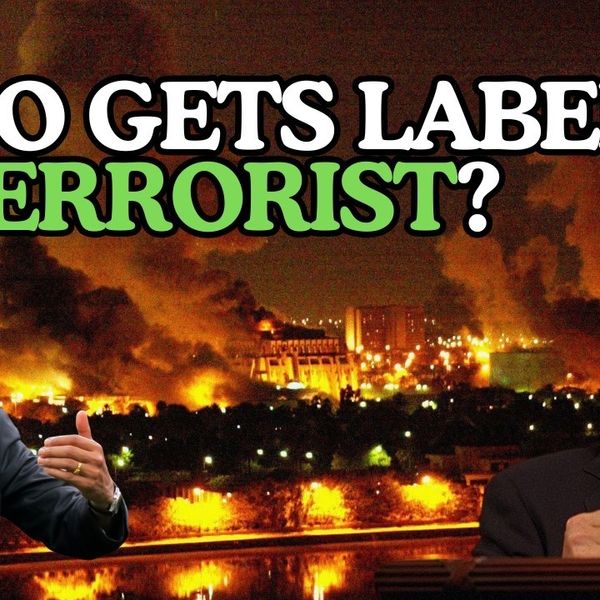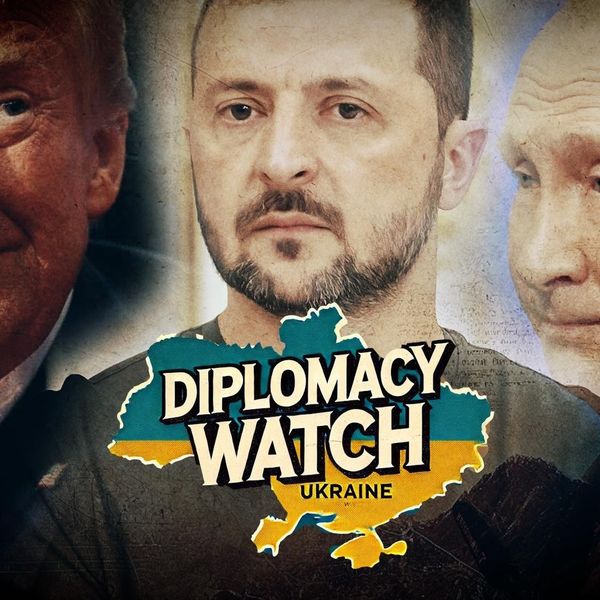Most of the peace plan for Ukraine now sketched out by the Trump administration is not new, is based on common sense, and has indeed already been tacitly accepted by Kyiv.
Ukrainian officials have acknowledged that its army has no chance in the foreseeable future of reconquering the territories now occupied by Russia. Vice President J.D. Vance’s statement that the U.S. plan would “freeze the territorial lines…close to where they are today” simply acknowledges an obvious fact.
On the other hand, by reportedly agreeing to a ceasefire along the present front line, Putin has indicated his readiness to abandon Russia’s demand that Ukraine withdraw from the parts of the provinces claimed by Russia that Ukraine still holds. This too is common sense. The Ukrainians will never agree to give those up, and, judging by the slowness of Russia’s advance to date, conquering these territories in the face of Ukrainian resistance backed by the U.S. would be a long and horribly bloody process from which Russia would gain only devastated wastelands.
Even without a U.S. veto, NATO membership for Ukraine is not realistic, both because all existing NATO members have made clear that they will not fight to defend Ukraine, and because several European countries will also veto Kyiv’s membership. Indeed, during the peace talks at the war’s outset, President Volodymyr Zelensky himself said that since all the leading NATO governments (including the Biden administration) had refused to promise NATO membership within five years, a treaty of neutrality with security guarantees was the best way for Ukraine to go.
At the same time, the Trump plan contains one big surprise: the offer to recognize Russian sovereignty over Crimea. Unlike neutrality and de facto (not de jure) acceptance of Russian control over the other territories, this really constitutes a major concession to Russia. It is not, however, as big as the Western media is suggesting, since it does not cover the other four provinces in eastern Ukraine that Russia claims to have annexed.
Nor is it clear yet whether the Trump administration is simply offering formal recognition of Russian sovereignty over Crimea itself, or whether it — and Moscow — will also insist on Ukraine doing so, which is almost certainly politically impossible for the Zelensky government. White House press spokeswoman Karoline Leavitt has said that Trump’s offer of recognition of Russian sovereignty over Crimea applies only to the U.S., and that he is not demanding that Ukraine follow suit.
Given this ambiguity, it was unwise and thoughtless of Zelensky to declare immediately that “there is nothing to talk about here.” Maybe he doesn’t need to talk about it — and this kind of public rebuff is no way to retain the Trump administration’s sympathy.
There is a certain legal, moral, and historical basis for the U.S. at least to treat Crimea differently, since Crimea was only transferred from the Russian Soviet Republic to the Ukrainian Soviet Republic by Soviet decree in 1954, and without any pretense of consultation with the local population. The Crimean majority vote to join Russia in 2014 also appears to have been generally credible, while the “referenda” held by Russia in the other four provinces in the middle of the war are rightly seen as wholly unreliable.
Will this plan bring peace? Russia appears close to accepting it — though at least as revealed so far, the plan does not appear to address other Russian demands, including the rights of Russian speakers in Ukraine, limitations on the Ukrainian armed forces, and, above all, a bar on a European “reassurance force” in Ukraine, something on which the British, French, and other governments have been working intensively.
It is possible that the Kremlin will try to load additional and genuinely unacceptable conditions onto the peace plan (for example, radical reductions in the Ukrainian armed forces). In that case, Trump should blame Moscow for the failure of the peace process, and, while walking away from it, should also continue U.S. aid to Ukraine.
A key motive for Moscow’s acceptance is that the Putin administration is indeed extremely anxious that Trump should blame Ukraine and the Europeans, not Russia, for a failure of the talks, and therefore that if, as threatened, he “walks away” from the peace process, he will also cut off military and intelligence aid to Kyiv.
For that same reason, the Ukrainians and Europeans would be insane to reject this plan outright, as initial statements suggest they may. As already noted, the formal goals set by Ukraine, for NATO membership and the recovery of its lost territories, are practically impossible to achieve. In concrete terms therefore, Ukraine loses nothing by agreeing to Trump’s plan.
Assuming that the British government sticks to Prime Minister Keir Starmer’s statement that a European “reassurance force” can enter Ukraine only if the U.S. acts as a “backstop,” then this force is also not going to happen. Trump has no intention of providing such a guarantee, which would amount to Ukrainian NATO membership by another name. Key European governments including Poland’s have also said that they would not participate in any such force.
At present and for a considerable time to come, the British and French armies simply do not seem to have the troops for such a deployment in a context of possible war with Russia. A former British army chief, General Lord Dannatt, has said that (given the need for rotation and training of troops) up to 40,000 British soldiers would need to be designated for such a force, and “we just haven’t got that number available.” Creating such a force for Ukraine would also mean ending British commitments to defend existing NATO members, notably the Baltic states and Poland.
At present, the likely response of Kyiv and most European governments to the Trump plan appears to be “no, but.” In other words, they will reject the plan as it stands, but declare their readiness to negotiate on aspects of it. This, however, would be deeply unwise, if indeed Russia is ready to accept it. Trump is waiting on them and he is not a patient man. His administration’s threat to leave Ukraine and Europe to their own devices could hardly have been clearer. As Secretary of State Marco Rubio has stated:
“The Ukrainians have to go back home, they have to run it by their president, they have to take into account their views on all of this. But we need to figure out here now, within a matter of days, whether this is doable in the short term. Because if it’s not, then I think we’re just going to move on.”
If the U.S. does indeed “move on,” Ukraine will have placed itself in a terribly precarious situation, and West European countries may face a choice between deep humiliation and immense danger. For if U.S. aid is withdrawn, Ukraine’s ability to hold its present line would be greatly reduced, and the chances of a Russian breakthrough greatly increased.
If that happened, Europeans would either have to admit that their “ironclad” promises to Ukraine were made of paper, or send their troops into Ukraine. They could of course stay in Kyiv and Odessa, far away from the actual fighting, but how would that help Ukraine? And unless this intervention were worked out as part of a deal with Moscow that ceded much additional territory to Russia, how could European air forces avoid being drawn into direct combat?
Given these acute dangers, and given that details of the Trump plan still have to be worked out, the appropriate Ukrainian and European response should be “yes, but” — certainly if they wish to have any hope of retaining Washington’s support for Ukraine.
The Trump plan would leave 80% of Ukraine independent and free to try to move towards membership in the European Union, and, in historical terms, that would be a great (albeit qualified) victory for Ukraine. A rejection of that plan can only promise Ukraine greater defeat — possibly catastrophically greater.















